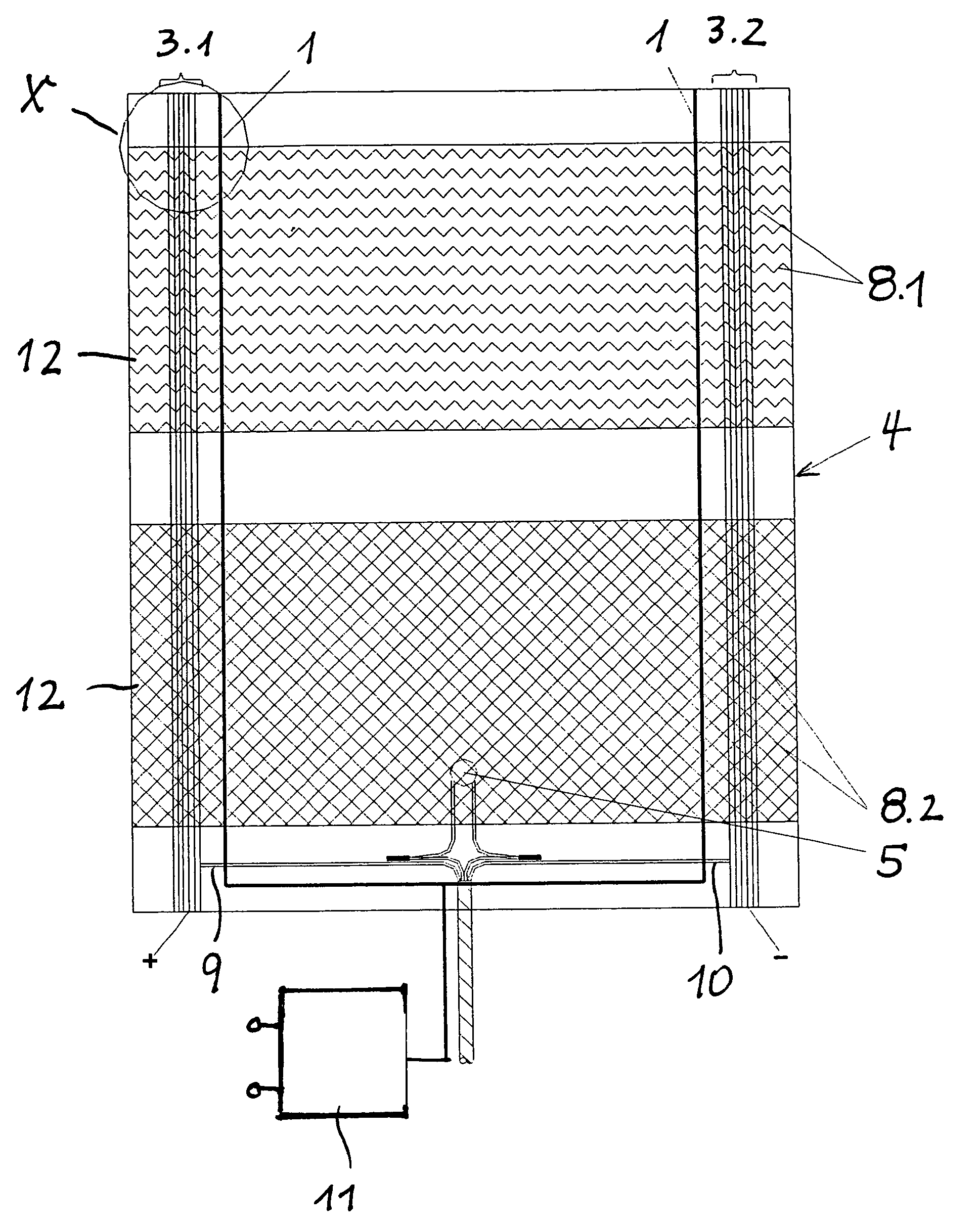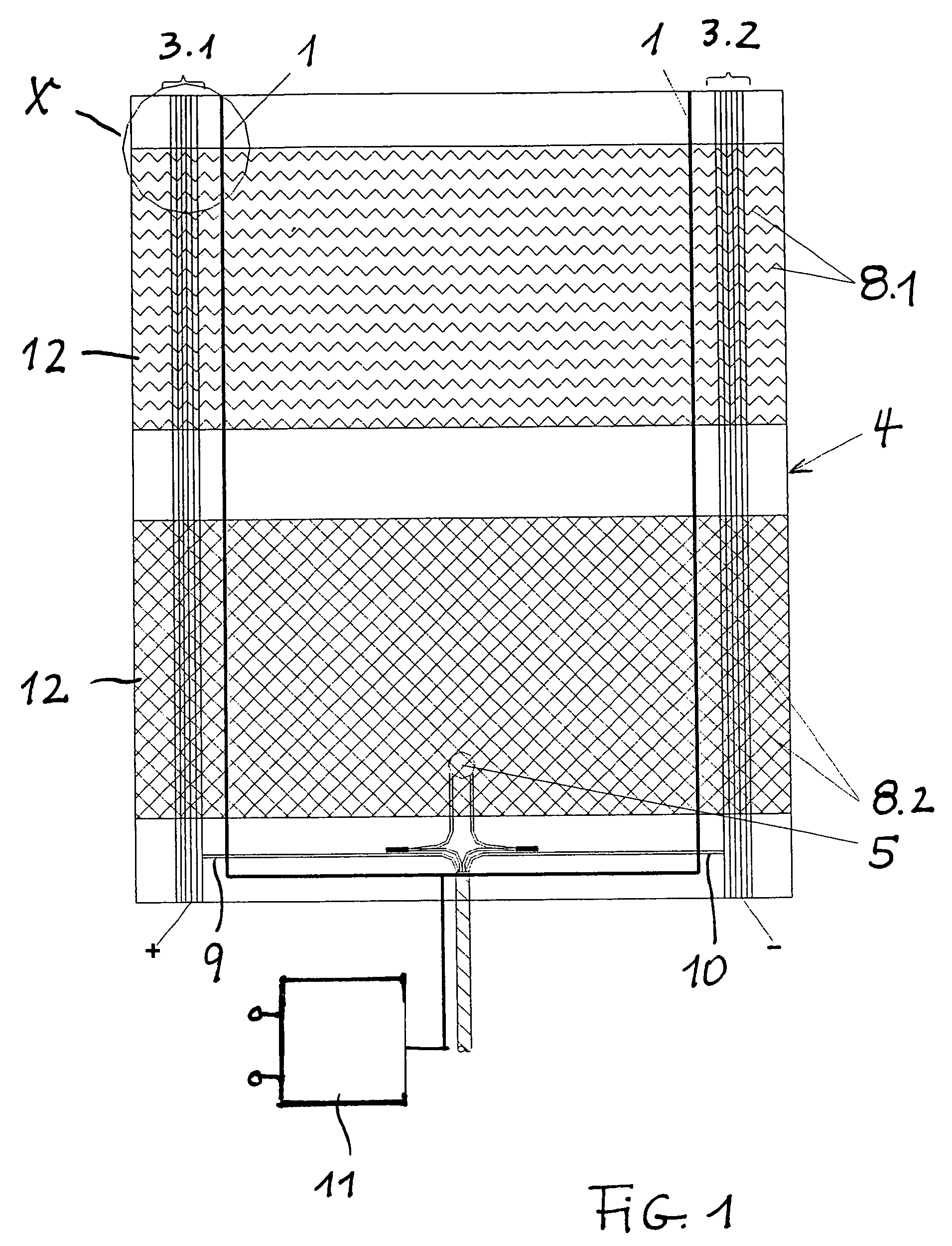Monitoring device for flexible heating elements
a monitoring device and flexible technology, applied in the direction of ohmic-resistance heating, heating element shapes, electrical appliances, etc., can solve the problems of inadmissible heating of heating elements, damage to heating conductors and contact conductors, and local damage to heating elements, so as to avoid damage through overheating and avoid overheating
- Summary
- Abstract
- Description
- Claims
- Application Information
AI Technical Summary
Benefits of technology
Problems solved by technology
Method used
Image
Examples
Embodiment Construction
[0019]The heating element according to FIG. 1 consists of a two-part textile surface heating element 4 whose upper part comprises a heating conductor extending in a wave-like way and whose lower part comprises heating conductors arranged in a net-like way.
[0020]At both side edges of the flexible heating element there is provided a region of contact conductors 3.1, 3.2 which, via suitable supply lines 9, 10, are connected to a voltage source (not illustrated).
[0021]In parallel to the contact conductors 3.1,3.2 in the inner region of the heating element, there is arranged one additional conductor 1 each functioning as a detection conductor. In the lower region of the heating element, approximately at the level of the supply lines 9, 10, the detection conductors come together and are connected to the evaluation unit 11.
[0022]In the present embodiment, the heating conductors 8.1, 8.2 are provided in the form of carbon heating conductors and the additional conductors 1 in the form of det...
PUM
 Login to View More
Login to View More Abstract
Description
Claims
Application Information
 Login to View More
Login to View More - R&D
- Intellectual Property
- Life Sciences
- Materials
- Tech Scout
- Unparalleled Data Quality
- Higher Quality Content
- 60% Fewer Hallucinations
Browse by: Latest US Patents, China's latest patents, Technical Efficacy Thesaurus, Application Domain, Technology Topic, Popular Technical Reports.
© 2025 PatSnap. All rights reserved.Legal|Privacy policy|Modern Slavery Act Transparency Statement|Sitemap|About US| Contact US: help@patsnap.com



